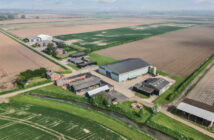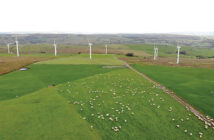This season’s long cold spells have meant that pre-ems have continued working well to control black-grass populations in wheat crops. But growers will be missing a trick if they don’t finish the programme with a post-emergence treatment even if control is looking good.
“Reports from the field are that it has been a good season for pre-emergence herbicides which are still showing some activity,” says Dr Gordon Anderson-Taylor of Bayer. “When control is good, there is the temptation not to follow up with a post-emergence but that would be a missed opportunity to reduce populations.”
Managing populations and seed return is the key to successful black-grass control. The decision about whether to control the weed with a post-em is not just about how much damage the black-grass can do this year but how many seeds it will return to the soil for future years.
The aim of the control programme is to have fewer seeds in the soil at the end of the season than at the beginning. Achieving this requires a full range of cultural and chemical control methods to reach the magic 95–98% total control which typically means the weed population is on a downward trend.
“We know that black-grass can produce a lot of seed, sometimes more than 1000 seeds per plant,” explains Dr Anderson-Taylor. “However, this season after good pre-em performance I would expect that any survivors or late germinating plants will produce much less than this. Nevertheless, if there are any black-grass plants surviving in the crop it is worth controlling them as each one can shed hundreds of seeds which will cause problems next year.”
With opportunities limited due to weather conditions making the most of any chance to spray is critical. The best available herbicide for controlling black-grass in wheat is Monolith (mesosulfuron + propoxycarbazone) which provides 10% more control than its predecessor Atlantis WG (mesosulfuron + iodosulfuron).
Like any herbicide, application is important for successful activity. Monolith should be applied to a dry or drying leaf as a fine–medium spray with the adjuvant biopower included (1L/Ha) to assist the herbicide in landing and settling on the target leaf.




